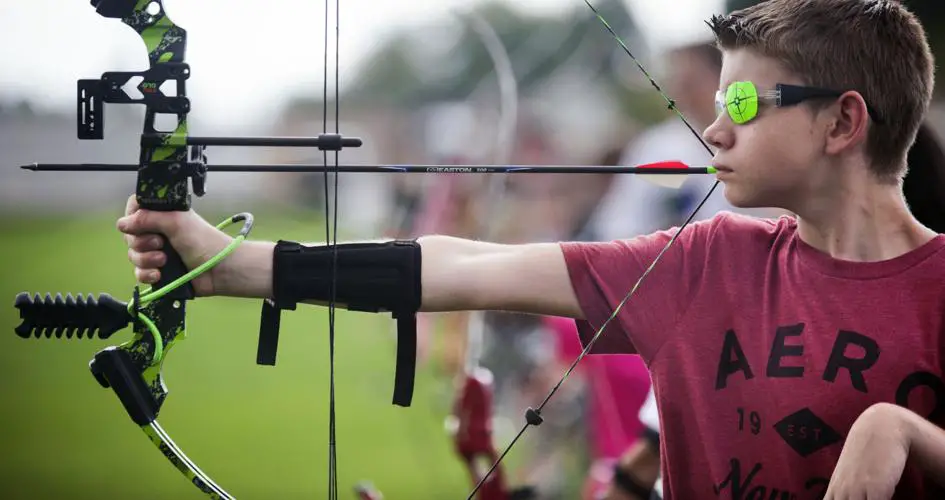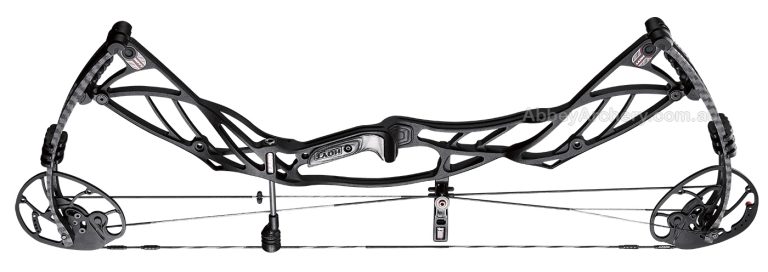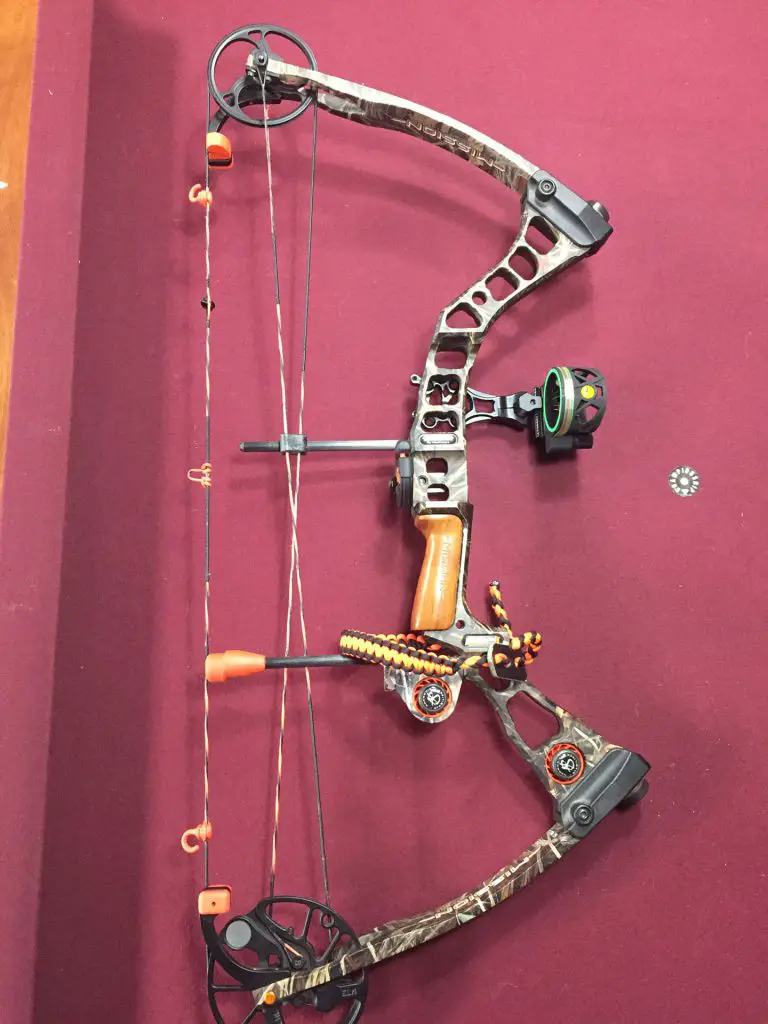Bow And Arrow Accidents
Bow and arrow accidents can have serious consequences, making it essential to understand the mechanics and safety measures associated with using a compound bow. The compound bow combines innovation and tradition, with its system of cables, pulleys, and cams making it a preferred choice for many archers. Not only can compound bows generate immense power and speed, but they also offer improved accuracy and adjustability. However, choosing the right compound bow and maintaining it properly are crucial for safety. By following recommended safety guidelines and using the appropriate arrows and accessories, you can ensure a thrilling and enjoyable archery experience without the risk of accidents.

Common Causes of Bow and Arrow Accidents
Bow and arrow accidents can occur due to a variety of factors. Inadequate safety measures, lack of proper training, misuse of equipment, and carelessness or negligence are some of the primary causes of these accidents.
Inadequate Safety Measures
One of the most common causes of bow and arrow accidents is the absence or inadequacy of safety measures. This can include not having a designated shooting range or firing area, improper installation of targets, or the absence of barriers to prevent arrows from leaving the designated area.
To avoid accidents, it is crucial to establish clear safety protocols and ensure that everyone follows them. Implementing safety measures such as using safety nets, backstops, and proper signage can significantly reduce the risk of accidents.
Lack of Proper Training
Another significant cause of bow and arrow accidents is the lack of proper training. Without understanding the correct techniques for handling a bow and arrow, individuals are more likely to make mistakes that can lead to accidents.
It is essential for individuals to receive proper training from qualified instructors before engaging in archery activities. Training should cover various aspects, including correct stance, proper grip, drawing the bowstring, and releasing the arrow. Additionally, individuals should be educated about safety protocols and procedures to follow while using a bow and arrow.
Misuse of Equipment
Misuse of equipment can also contribute to bow and arrow accidents. Using improper arrows or incorrect equipment for the specific bow can lead to malfunctions or accidents. It is crucial to use arrows and accessories that are recommended for the specific bow’s draw weight and design.
Regular maintenance and inspection of equipment are also essential to prevent accidents. Checking the strings, cables, limbs, and cams for any signs of wear and tear can help identify potential issues before they cause accidents.
Carelessness and Negligence
Carelessness and negligence on the part of the archer can also result in accidents. Failing to follow safety rules, disregarding personal limitations, or not paying attention to one’s surroundings can all contribute to accidents.
To prevent accidents caused by carelessness and negligence, it is important to always be fully present and focused while using a bow and arrow. Avoid distractions and ensure that all safety procedures are followed diligently.
Types of Bow and Arrow Accidents
Bow and arrow accidents can result in various types of incidents, ranging from misfires and accidental releases to physical injuries and property damage. Additionally, accidents can also cause injuries to others who may be present in the vicinity.
Misfires and Accidental Releases
Misfires and accidental releases occur when the bow is discharged unintentionally or prematurely. These accidents can happen due to a variety of reasons, including improper handling, equipment malfunctions, or distractions.
Misfires and accidental releases can be dangerous as they often happen unexpectedly. It is crucial to always have the bow pointed in a safe direction and be aware of the surroundings to minimize the risk of injuries.
Physical Injuries
Physical injuries are a common consequence of bow and arrow accidents. These injuries can range from minor cuts and bruises to more severe wounds, including punctures and impalements.
Proper safety gear, such as arm guards and finger tabs, can help protect the archer from physical injuries. Additionally, following safety protocols and using the appropriate technique while shooting can reduce the likelihood of accidents.
Property Damage
Accidents involving bows and arrows can also result in property damage. Arrows can easily penetrate and damage objects such as trees, buildings, or vehicles if not used with caution.
To prevent property damage, it is crucial to choose a suitable shooting location and ensure that there are no valuable or fragile items in the vicinity. Using proper targets and backstops can also minimize the risk of arrows causing damage.
Accidental Injuries to Others
In some cases, bow and arrow accidents can result in accidental injuries to individuals who are nearby. This can happen if the archer fails to maintain a safe distance from others or if arrows miss their intended target.
To avoid accidental injuries to others, it is important to establish clear boundaries and ensure that individuals who are not participating in the activity are at a safe distance. Maintaining constant awareness of the surroundings can also help prevent accidents involving bystanders.

Preventing Bow and Arrow Accidents
Preventing bow and arrow accidents is essential to ensure the safety of both the archer and those around them. There are several measures that can be taken to reduce the risk of accidents.
Proper Safety Gear
Wearing the appropriate safety gear is crucial when using a bow and arrow. This includes items such as arm guards, finger tabs, and protective eyewear. Safety gear can help protect against physical injuries and minimize the severity of accidents.
Safety Precautions
Implementing safety precautions is vital to prevent accidents. This can include establishing clear shooting areas or ranges, defining safe zones, and setting up appropriate barriers or backstops to contain arrows.
It is also important to ensure that all participants are aware of the safety protocols and guidelines. Regular safety briefings and reminders can help reinforce these precautions and keep safety at the forefront of everyone’s mind.
Regular Equipment Inspections
Regular inspections of bows and arrows are essential to identify any issues or potential problems before they lead to accidents. Checking for signs of wear and tear, loose components, or any damage can help ensure that the equipment is in good condition.
Regular maintenance, such as lubricating the moving parts, tightening loose screws, and replacing worn-out components, can extend the lifespan of the equipment and reduce the risk of accidents caused by equipment failure.
Training and Education
Proper training and education are fundamental in preventing bow and arrow accidents. Individuals should receive comprehensive instruction on the correct techniques for handling a bow and arrow, as well as safety protocols to follow.
Qualified instructors can provide valuable guidance on proper form, shooting techniques, and safety precautions. Participating in training programs and regularly updating knowledge and skills can significantly reduce the risk of accidents.
First Aid for Bow and Arrow Injuries
In the event of a bow and arrow injury, knowing how to respond promptly and effectively can make a significant difference. Although prevention is the best approach, accidents can still happen, and being prepared to provide first aid is crucial.
Assessing the Injury
The first step in providing first aid for a bow and arrow injury is to assess the severity and nature of the injury. This can include evaluating the wound’s size, depth, and location, as well as identifying any embedded objects, such as broken arrow shafts.
Controlling Bleeding
In cases of bleeding, it is important to control the bleeding as quickly as possible. Applying direct pressure to the wound using a clean cloth or bandage can help stop or reduce the bleeding. Elevating the injured area above the heart level, if possible, can also aid in controlling bleeding.
Treating Puncture Wounds
Bow and arrow injuries often involve puncture wounds, which can be more challenging to treat than superficial cuts. It is crucial to avoid removing any embedded objects, as they may be helping to control bleeding. Instead, stabilize the object and seek medical attention immediately.
Seeking Medical Attention
Regardless of the severity of the injury, it is important to seek medical attention for any bow and arrow injury. Even seemingly minor injuries can have underlying complications or require professional medical care to prevent infection and ensure proper healing.
Contacting emergency services or visiting the nearest medical facility as soon as possible is crucial to receive appropriate treatment for the injury.

Legal Consequences of Bow and Arrow Accidents
Bow and arrow accidents can have legal implications, both in terms of potential criminal charges and civil liability. It is important to understand the legal aspects associated with these accidents to ensure compliance with the law and protect oneself from legal consequences.
Potential Criminal Charges
Certain bow and arrow accidents can lead to criminal charges, especially if they involve negligence, recklessness, or intentional harm. Depending on the jurisdiction and specific circumstances, an individual may be held accountable for offenses such as assault, endangerment, or even manslaughter.
Understanding the laws and regulations related to archery activities in a particular jurisdiction is essential to avoid potential criminal charges and legal repercussions.
Civil Liability and Lawsuits
Bow and arrow accidents can also result in civil liability, where injured parties have the right to seek compensation for damages incurred. This can include medical expenses, lost wages, pain, and suffering, and other related costs.
To mitigate the risk of civil liability, it is important to prioritize safety and follow all safety protocols and guidelines. Having appropriate insurance coverage can also provide financial protection in case of accidents and legal claims.
Insurance Coverage
Having proper insurance coverage is crucial for individuals participating in archery activities. Personal liability insurance can help protect against potential legal claims and provide financial coverage for legal defense, medical expenses, and compensation.
Insurance policies specifically designed for archery activities can provide an added layer of protection and peace of mind. It is important to review insurance policies carefully to ensure that they cover all potential risks and liabilities associated with bow and arrow accidents.
Bow and Arrow Accident Case Studies
Examining real-life case studies of bow and arrow accidents can offer valuable insights into the causes, consequences, and lessons learned from these incidents.
Accidental Shooting at a Range
In one case study, an individual accidentally discharged an arrow at a shooting range, resulting in a fellow archer being injured. The accident was attributed to a failure to follow proper safety protocols and a momentary lapse in concentration.
Lessons learned from this case study emphasize the importance of strict adherence to safety protocols and maintaining focus while handling a bow and arrow. Following established rules and staying fully present during activities can help prevent accidents.
Incident During a Hunting Trip
Another case study involves an accidental shooting during a hunting trip. The accident occurred when a hunter mistook a moving object in the distance for game and fired an arrow.
This case highlights the significance of positively identifying the target before shooting and ensuring clear visibility of the surroundings. Maintaining constant awareness of other individuals in the vicinity and their movements can help prevent accidents and potential injuries.
Bow Mishap at a Recreational Facility
In a recreational facility, a bow mishap resulted in an arrow striking and damaging a nearby building. Investigation revealed that the accident was caused by the use of improper equipment and a lack of appropriate safety measures.
This case emphasizes the importance of using the correct equipment for the specific bow and implementing adequate safety precautions. Regular inspections of equipment, along with strict adherence to safety protocols, can significantly reduce the risk of accidents and property damage.
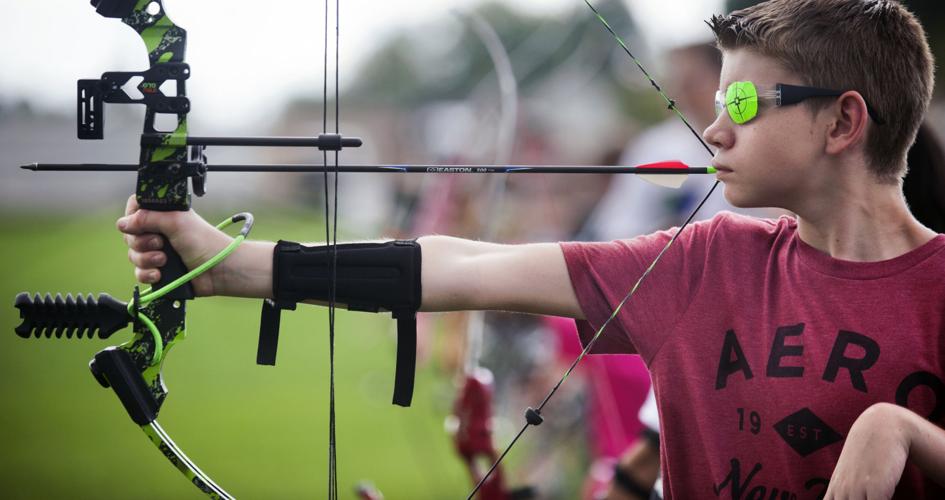
Safety Tips for Using a Bow and Arrow
Using a bow and arrow safely requires adherence to specific guidelines and best practices. By following these safety tips, individuals can minimize the risk of accidents and ensure a safer archery experience.
Always Point the Bow in a Safe Direction
Throughout the entire archery activity, it is crucial to keep the bow pointed in a safe direction. The bow should be directed towards the designated shooting area or target, away from people, animals, or any other objects.
By maintaining control over the direction of the bow, the risk of accidents caused by misfires or accidental releases can be significantly reduced.
Keep Fingers Clear of the String
When handling a bow, individuals should ensure that their fingers remain clear of the string until they are ready to shoot. Placing fingers on the bowstring prematurely can result in accidental releases or injuries.
Using finger tabs or a release aid can help maintain a safe distance between the fingers and the string while drawing or releasing the arrow.
Never Dry Fire a Bow
Dry firing refers to shooting a bow without an arrow. This can cause significant damage to the bow, including limb fractures and other malfunctions.
To protect the bow from damage, it is important to always have an arrow properly nocked before shooting. Dry firing should be avoided at all costs.
Use a Backstop or Target
Using a backstop or target is essential to prevent arrows from traveling beyond the intended shooting area. Backstops can help contain and stop arrows, minimizing the risk of property damage or injuries caused by arrows leaving the designated range.
Using appropriate targets designed for bow and arrow use further enhances safety by providing a clear aiming point and minimizing the chances of misses or off-target shots.
Proper Storage and Transportation of Bows and Arrows
Ensuring the proper storage and transportation of bows and arrows is crucial for maintaining their condition and preventing accidents. Follow these guidelines to ensure the safety and longevity of your archery equipment.
Safe Storage Practices
When not in use, bows and arrows should be stored in a secure and dedicated location. This can be a locked cabinet, case, or closet, where they are protected from unauthorized access and potential damage.
Separate compartments or dividers within storage containers can help prevent arrows from colliding or becoming damaged. Storing bows and arrows away from extreme temperatures or humidity can also help maintain their performance and integrity.
Transportation Guidelines
When transporting bows and arrows, it is essential to ensure they are secured safely. Using a bow case or a quiver with arrow tubes can help protect the equipment during transit.
Bows should be unstrung when being transported to reduce the risk of accidental releases or damage to the limbs. Arrows should also be secured in their respective containers or quivers to prevent them from shifting or causing potential injuries.
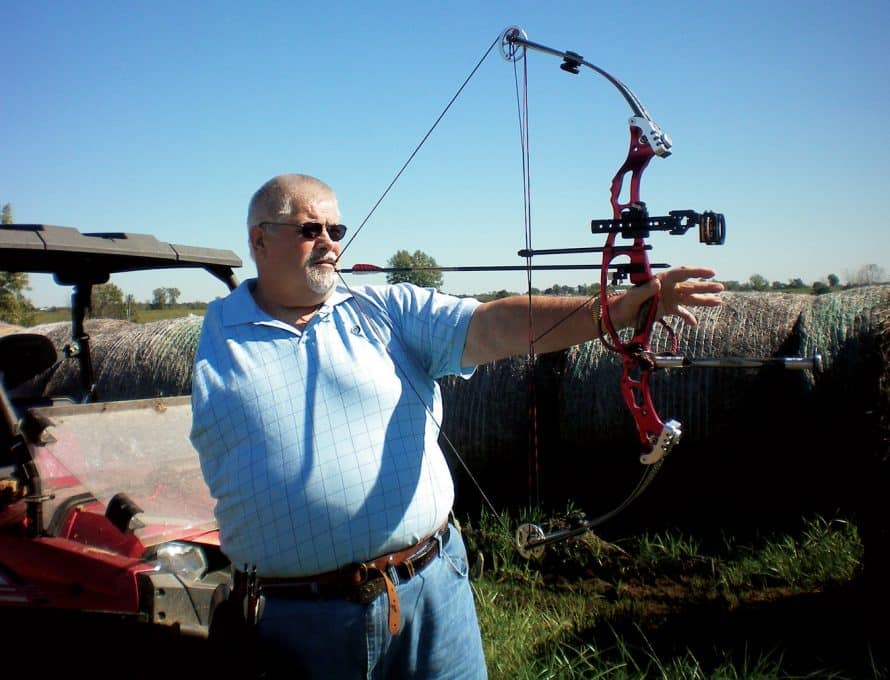
Emergency Preparedness for Bow and Arrow Accidents
Being prepared for emergencies is crucial when participating in archery activities. Equipping oneself with the necessary tools and knowledge can help provide prompt and appropriate response in case of bow and arrow accidents.
Knowing the Location of Medical Facilities
Before engaging in archery activities, it is important to be aware of the locations of nearby medical facilities. Knowing the quickest route to a hospital or medical clinic can save valuable time in case of an emergency.
Additionally, having knowledge of the available emergency services, such as contacting local authorities or emergency hotlines, is essential for quick assistance.
Having a First Aid Kit on Hand
Carrying a well-stocked first aid kit is essential to provide immediate care for minor injuries or to stabilize more severe injuries before professional medical help arrives. The first aid kit should include items such as bandages, dressings, antiseptic solutions, and other necessary supplies.
Ensuring that the first aid kit is easily accessible and that individuals know how to use its contents can make a significant difference in the event of an accident.
Emergency Contact Information
Providing emergency contact information to relevant individuals is critical for prompt notification in case of an accident. This can include sharing emergency contact numbers with fellow participants, instructors, or range managers.
Additionally, it is important to have emergency contact information readily available on one’s person or stored in a safe location. This can help emergency responders quickly notify family members or friends in case of a serious accident.
Conclusion
Bow and arrow accidents can be prevented by implementing adequate safety measures, receiving proper training, and using equipment responsibly. Understanding the types of accidents that can occur and the potential legal consequences is essential.
By following safety tips, properly storing and transporting equipment, and being prepared for emergencies, individuals can enjoy the exciting and rewarding experience of using a bow and arrow while prioritizing safety. Always remember to prioritize safety, be responsible, and respect the power of the bow and arrow.

